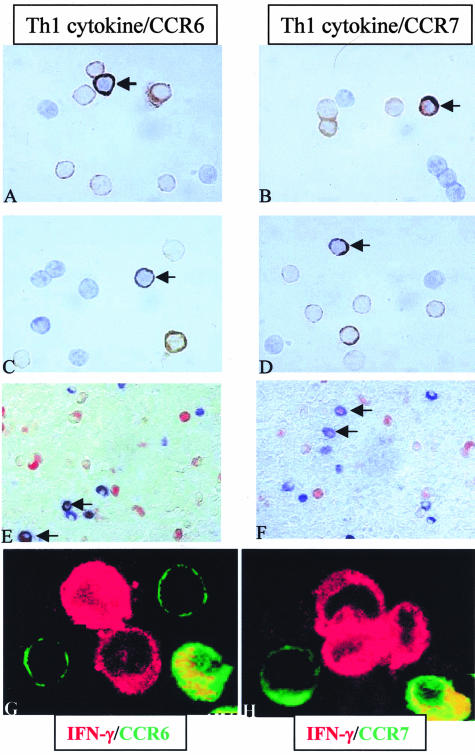Figure 5.
Some of the IL-17+ or IFN-γ+ cells can express the chemokine receptors CCR6 and CCR7 after oligoclonal and polyclonal activation and also in inflammatory diseases such as RA. Double staining using anti-IL-17 or anti-IFN-γ (DAB, brown) and anti-CCR6 or anti-CCR7 antibodies (Vector blue, blue) were performed on PBMCs stimulated with PMA/PHA for 4, 24, and 48 hours or with the superantigen SEB for 4 hours. After polyclonal activation and whatever duration of stimulation, some of the IL-17+ cells express the CCR6 receptor as indicated by the arrows in A and G. However, two other subsets were detected: IL-17+CCR6− and IL-17-CCR6+ (A and G). As for CCR6, double staining using anti-IL-17 and anti-CCR7 antibodies revealed the presence of IL-17+CCR7+ (arrow), IL-17+CCR7− and IL-17-CCR7+ subsets (B and H). Staining on IFN-γ+CD4+ isolated cells showed the same pattern of CCR6 and CCR7 expression (C and D, respectively). Double staining using anti-IL-17 or anti-IFN-γ (AEC, red) and anti-CCR6 or anti-CCR7 antibodies (blue) were performed in RA synovium sections. IL-17+ cells have the same pattern of CCR6 and CCR7 expression (E and F, respectively). Original magnifications: ×1000 (A–D, G, H); ×400 (E, F).

